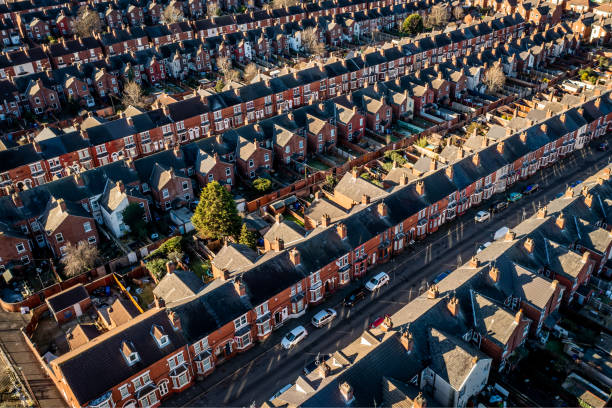Embarking on a journey into the intricate realm of construction, “Unveiling the Depth: Exploring the Thickness of Render” beckons us to delve into the nuanced layers of architectural expression, including the pivotal question: how thick is render? In the ever-evolving landscape of construction, the concept of render transcends its utilitarian roots, becoming an art form that speaks volumes about craftsmanship and design.
This exploration goes beyond the surface, peeling back layers to reveal the profound significance of render thickness in shaping the aesthetic and structural integrity of buildings. From historical masterpieces to contemporary marvels, this examination unravels the dynamic interplay between form and function, shedding light on how the thickness of render serves as a silent storyteller of architectural evolution.
As we navigate through the dimensions of construction, this endeavour allows us to appreciate the depth that render adds to the visual tapestry of our built environment, prompting a deeper understanding of the fusion between artistry and engineering in the construction world.
Understanding Render in Construction:
Definition and Purpose:
Render, often called stucco or plaster, is a mixture of cement, sand, and water applied to exterior and interior walls. Its primary purpose is to provide a protective and decorative coating, shielding the underlying structure from the elements while enhancing the building’s appearance.
Visual Aesthetics:
Render mix is a strong tool for architects and designers to realise their creative and attractive visions. The thickness of the render layer influences the texture, pattern, and overall aesthetic of a building. From sleek and modern to traditional and rustic, the choice of thickness contributes significantly to the visual identity of a structure.

The Role of Surface Thickness in Construction:
Structural Integrity:
Render thickness is not merely an aesthetic consideration; it plays a technical role in reinforcing the structural integrity of a building. Adequate thickness ensures that the render layer effectively supports the structure, providing stability and durability over time.
Weather Resistance:
The thickness of the render generally impacts a building’s ability to withstand weather elements. A thicker render layer is a more robust barrier, protecting the underlying structure from rain, wind, and temperature fluctuations. This is particularly important in regions with harsh weather conditions.
Insulation Properties:
Render thickness contributes to a building’s insulation properties. Thicker renders on the external walls provide better thermal insulation, helping regulate internal warm temperatures and reducing energy consumption. This aspect is particularly relevant in sustainable and energy-efficient construction practices.
Crack Prevention:
Adequate exterior render thickness is crucial in preventing cracks and fissures. Thin render layers are more prone to cracking, compromising both the aesthetic appeal and structural integrity of a building. Optimal thickness helps distribute stress more effectively, reducing the likelihood of cracks.

Exploring Different Render Thickness Options and how to apply them:
Thin Coat Renders:
Thin coat renders, typically ranging from 2-5 mm thick, are popular for their flexibility and ease of application. While they may lack the same level of impact resistance as thicker options, they offer a smoother finish and are well-suited for modern architectural styles.
Medium Coat Renders:
Medium coat renders, with thickness ranging between 5-15mm, balance aesthetics and durability. They are versatile enough to accommodate various architectural designs and provide enhanced protection against weather elements.
Thick Coat Renders:
Thick coat renders exceeding 15 mm are chosen for their robustness and superior protective qualities. Commonly used in traditional and historic buildings, thick renders offer excellent weather resistance and contribute to the structure’s longevity.

Challenges and Considerations:
Application and Preparation Challenges:
Achieving uniform thickness during the application of render mix can be challenging, especially on irregular surfaces. Proper techniques and experienced applicators ensure a consistent and reliable outcome.
Compatibility with Substrates:
Different substrates may require specific considerations in terms of render thickness. Ensuring compatibility and adherence to industry standards is essential to prevent delamination or detachment over time.
Maintenance and Repairs:
The thickness of the render also affects the ease of maintenance and repairs. Thicker renders may require less frequent maintenance, but when repairs are necessary, they can be more complex. Conversely, thin renders are easier to repair but may need more frequent attention.

Innovations in Render Technology:
Self-Healing Renders:
Emerging technologies explore the development of self-healing renders mix that can repair small cracks autonomously. These innovative materials can extend renderings’ lifespan and reduce the need for frequent maintenance.
Adaptive Insulation Renders:
Some modern render formulations include adaptive insulation properties, adjusting their thermal resistance based on external temperature conditions. This dynamic feature enhances energy efficiency and aligns with sustainable construction practices.
Takeaways
- Exploring and determining the appropriate thickness is essential for long-term durability and resilience.
- Different thicknesses can influence the visual appearance of surfaces, impacting the overall design.
- The exploration of render thickness extends to adapting construction practices to diverse environmental conditions.
FAQs:
What Factors Influence the Choice of Render Thickness?
Render thickness is influenced by factors such as the type of substrate, climate, and the structure’s intended purpose. High-exposure areas may require thicker renders for enhanced protection, while interior spaces might balance aesthetics and functionality.
How Does Render Thickness Impact Energy Efficiency?
The thickness of the render can influence the thermal performance of a building. Thicker renders provide additional insulation, potentially improving energy efficiency by regulating internal temperatures. Understanding this impact is essential for making informed decisions in sustainable construction practices.
Are There Standard Guidelines for Determining Render Thickness?
While general guidelines exist, the appropriate render thickness can vary based on specific project requirements. Factors such as local building codes, material specifications, and architectural design considerations all play a role. Engaging with professionals and thoroughly assessing project needs is crucial for determining the ideal render thickness.
Conclusion
The thickness of the render mix in construction is a multifaceted consideration that goes beyond the surface aesthetics of a building. From influencing structural integrity and weather resistance to contributing to insulation properties, exterior render thickness is a crucial aspect of architectural design and construction.
As technology advances, innovations in render formulations continue to shape the industry, offering solutions that balance functionality, durability, and design aesthetics.
By understanding the nuanced implications of exterior render thickness, architects, builders, and designers can make informed decisions that not only enhance the visual appeal of structures but also ensure their long-term resilience.



